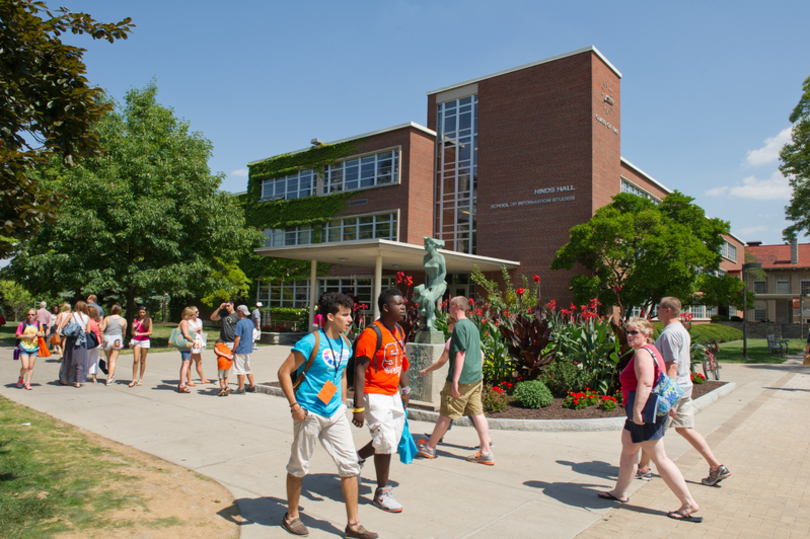Invest Syracuse’s tuition hike matters even if scholarships cover the difference

Daily Orange File Photo
Raising tuition can't be justified until diverse recruitment efforts are prioritized to gain feedback from a more widespread population, The Daily Orange Editorial Board argues.
Editor’s note: The Daily Orange Editorial Board met with Syracuse University administrators to discuss the Invest Syracuse initiative unveiled in July. This editorial is the second in a four-part series based on that discussion. You can read more about Invest Syracuse here.
Invest Syracuse comes with the promising objective to “expand opportunity to students of promise and talent from across the socioeconomic spectrum.” It’s worth noting $30 million of Invest Syracuse’s $100 million funding will be raised through a $3,300 tuition premium.
This tuition bump will be added starting with Syracuse University’s freshman class next year. The rationale behind the premium is based on the assumption that sticker price isn’t a student’s deciding factor when choosing a college in comparison to a higher quality of student life. But that assertion, and the argument that it won’t discourage potential students from applying, seems to be based in large part on anecdotal evidence.
“We talk to students and parents, they come in for campus tours every day,” said Dolan Evanovich, senior vice president for enrollment and the student experience. “We go to high schools.”
Administrators compare SU to peer institutions, many of which actually charge more than SU, Evanovich said.
This anecdotal evidence isn’t enough to justify raising tuition for a university that claims it’s trying to be more accessible. Administrators said there is no data to back up the idea that sticker price defines where students apply and go to college.
It’s true that most SU students don’t pay that full price. Scholarships and grants were awarded to 75 percent of students in 2016, according to SU’s admissions website.
Still, there’s also no data that shows sticker price isn’t important — and it’s problematic to believe otherwise. Downplaying the sticker price implies administrators have mainly heard from students who feel this way, in addition to students already considering SU and other private research institutions.
Those who visit SU before applying or enrolling are likely more privileged than those who don’t. They can afford to travel to the university and stay over at a hotel, and their parents can take off work to come along.
But these students aren’t who Invest Syracuse aims to “expand opportunity” for, and administrators shouldn’t prioritize their feedback. Instead, SU needs to seek out the voices of students who’d never consider SU because of its price tag, something it can accomplish by making more diverse and widespread high school recruitment efforts.
SU already has plenty of students from the upper end of its economic spectrum. About 25 percent receive no financial support from the university, according to SU’s admissions website.
Yes, SU needs students who pay full price to create financial balance with those who don’t. But Invest Syracuse clearly states its intent to raise money in support of those on the low end of the socioeconomic spectrum. Asserting that a high sticker price doesn’t matter implies otherwise.
The Daily Orange Editorial Board serves as the voice of the organization and aims to contribute the perspectives of students to discussions that concern Syracuse University and the greater Syracuse community. The editorial board’s stances are determined by a majority of its members. You can read more about the editorial board here.




